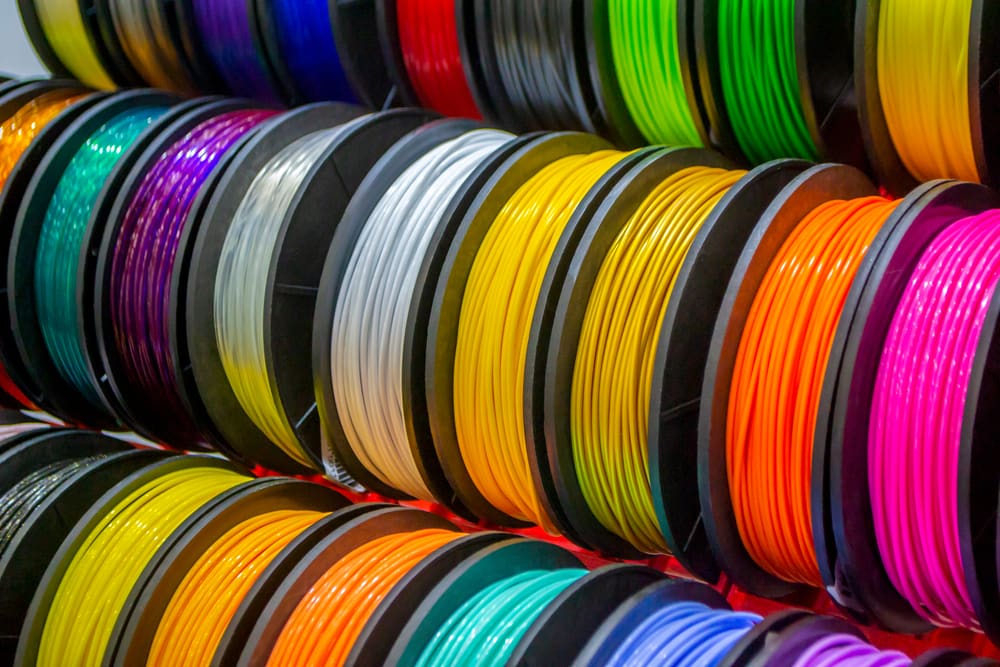Ever stared at a wall of filament spools in every color imaginable and felt a little overwhelmed? You’re not alone! Choosing the right 3D printing material is one of the most crucial decisions you’ll make, and it can be the difference between a perfect print and a pile of spaghetti. But don’t worry, we’re here to break it down for you. Let’s dive into the fantastic world of filaments!
The Big Three: Your Starting Lineup 🏆
When you first get into 3D printing, you’ll probably hear about PLA, ABS, and PETG a lot. Think of these as the main players—each with its own strengths and weaknesses.
1. PLA (Polylactic Acid) 🌿
This is the friendly neighborhood filament. It’s made from renewable resources like corn starch, so it’s biodegradable and eco-friendly.
- Pros:
- Easy to print with (low melting point, doesn’t require a heated bed).
- Minimal warping or shrinking.
- No strong odors during printing.
- Great for beginners!
- Cons:
- Not very strong or durable.
- Can become brittle over time.
- Not heat resistant (your car dashboard is not a good place for a PLA print!).
- Best for: Prototypes, decorative items, toys, and low-stress applications.
- Image: A colorful pile of PLA filament spools.
2. ABS (Acrylonitrile Butadiene Styrene) 💪
This is the tough guy of the group. ABS is the same plastic used in LEGO bricks, which tells you a lot about its durability.
- Pros:
- Very strong and impact-resistant.
- Can be post-processed with acetone to create a smooth finish.
- Higher heat resistance than PLA.
- Cons:
- Requires a heated bed and an enclosure to prevent warping.
- Produces a strong, sometimes toxic, odor during printing.
- More challenging to print with.
- Best for: Functional parts, phone cases, and automotive parts.
- Image: A close-up of a 3D printer printing an object with ABS filament inside an enclosure.
3. PETG (Polyethylene Terephthalate Glycol) 🌈
PETG is like the love child of PLA and ABS, taking the best of both worlds. It’s the same material used in soda bottles!
- Pros:
- Durable and flexible.
- Good heat resistance.
- Easier to print than ABS (less warping).
- Food-safe (with proper printing practices).
- Cons:
- Can be “stringy” if not printed with the correct settings.
- Can be prone to scratches.
- Best for: Mechanical parts, waterproof containers, and durable everyday items.
- Image: A water bottle made from PETG next to a 3D printed object of the same material.
Beyond the Basics: The Exotic Filaments 🚀
Once you’ve mastered the main three, a whole new world of exotic materials opens up.
- Nylon: Super strong and flexible, great for gears and hinges.
- TPU/TPE: A flexible filament that’s perfect for phone cases, gaskets, and anything that needs to bend.
- Wood-filled: PLA mixed with wood fibers. It looks and smells like wood, and you can even sand or stain it!
- Metal-filled: PLA mixed with metal powder (like copper or bronze). It’s heavy and has a beautiful metallic finish.
💡 Pro Tip: Always check the manufacturer’s recommended print settings for the specific filament you’re using. Temperature, retraction, and print speed can vary wildly between brands!
The Final Word 💬
Don’t be afraid to experiment! Start with PLA to get a feel for your machine, then branch out to other materials as your skills grow. Each filament tells a different story and has a unique feel, giving your creations their own personality. The more you print, the more you’ll understand what works best for your projects. Happy printing! 🎉
What’s your favorite filament to use? Let us know in the comments!
